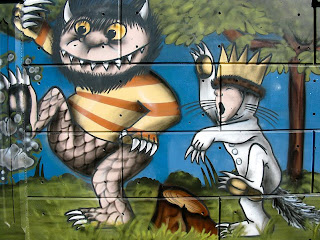Blog the Cut Parts of Your Book
I like to write books. I expect I will also like to publish books; I'll let you know when it happens.
One of the tough things about any kind of writing is having to remove things from your book that you love but just don't belong. It's hard.
In my non-fiction books, I have ideas that I think are new, exciting. I want people to know about them. But sometimes they make the book worse, and I have to cut them.
I write non-fiction using a typesetting program called LaTeX (pronounced LAH-teck). It's a wonderful thing, and one of my favourite things about it is that you can make "comments." Here is a screenshot of my working environment:
Working with LaTeX is not a "what you see is what you get" interface. Writing is a bit like coding HTML. I'll explain what is going on in this snippet. Rather than numbering sections, you can code them with the "\section{section name}" tag. You cite things using citep (a separate file contains the citation information). All of the stuff in orange are comments. You make comments by starting the line with a "%". What this means is that when you run LaTeX, these things are ignored, and you get a gorgeous PDF. You only see them when you look at the source. This is really wonderful. The bit "% --gossip" means to me that I'm starting a section on gossip-- I can find it quickly because the preceding double hyphen is my signal for the discussion for a topic. So if I want to jump to the gossip section, I just search for "--gossip".
I use the comments for making annotations for myself. The complete reference, what page it's on, the website from which I originally found out about the paper, my reservations about where in the book it should be, a note to myself to change something, etc.
When I cut something from my book, it's often not because it's a bad idea, but because it just doesn't belong. So I comment out that section. I can still see it, but it does not show up in the final document. It shows up, unobtrusively, in orange. As the book evolves, that commented section might suddenly fit elsewhere. It's still there, waiting to be un-commented.
Now I know Microsoft Word has something called "comments," but it's nothing like this. They do not remain in line with the text, it's not easy to turn text into a comment, and worst of all, comments are printed by default which drives me crazy. The unspoken intention is that when the document is done, you would have no comments, that comments are for the editing stage only.
My book is going through drafts right now, and my colleague Jeanette Bicknell is reading through it and giving me great comments. She's smart, interesting, and writes a great blog on the psychological effects of music for Psychology Today. Check it out at
http://www.psychologytoday.com/blog/why-music-moves-us
In one of her recent comments, she told me that my section arguing that tabletop role-playing games should be looked at as a form of art is contentious, and really not necessary for the point I'm making. She's absolutely right. So I cut it. More specifically, I commented out the section.
However, it's still an interesting topic. If I were using a word processor, I'd have to cut it out completely and maybe stick it in another file of fragments that I could mine later (this is exactly what I do when I use Word). That's ungainly. There's no record of where it was in case I want to put it back in, and I'm not reminded of it when I read through my book.
Commenting is easier on the writer than deleting because, to the writer, it still looks a bit like it's in the book. That's the psychological benefit: you're not as hesitant to comment as you are to delete; there's less at stake. Instead of having to kill your darlings, you're putting them in a cryonic stasis, ready to thaw out and live again.
But what to do with these cut sections? I just figured it out:
Blog Your Darlings
After the book gets published, it's good to comment on the book on your blog, for promotional purposes. You don't want to repeat too much of what's in the book, but you want to write interesting things that make people want to read it. So my plan is, after the book is published, to go through the commented sections and expand on them in blog postings.
This way, the blog has content that is novel and interesting, but still relates to and gets people interested in reading the book. The two support each other. Readers of the book get to learn more through the blog, which can then be used to get people interested in your next book.
And those ideas that were hard to me to remove from the book get to see the light of day in the end.


Comments
www.joeydavila.net